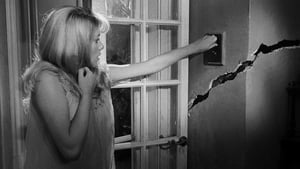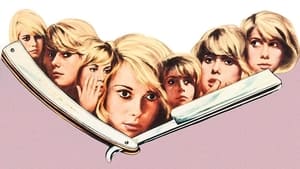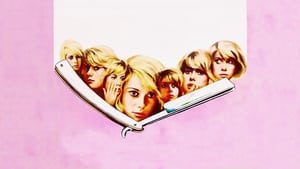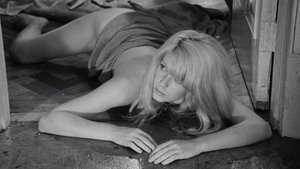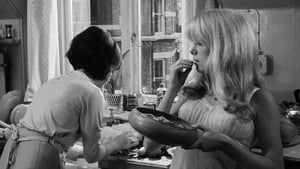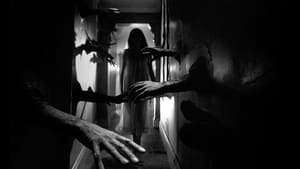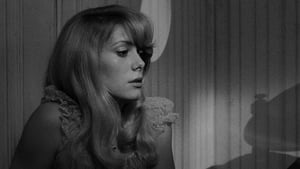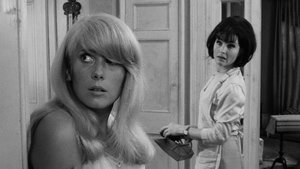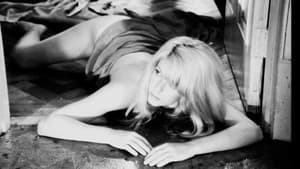Contact: info@alwanfilm.com
Video Sources 0 Views
- Watch trailer
- Repulsion 1965 Colorized


Synopsis
Table of Contents
ToggleRepulsion 1965 Colorized Review: A Psychological Horror Classic in Surreal Black-and-White

Introduction
When discussing the golden age of psychological horror, few films stand out as starkly and disturbingly as Repulsion (1965). Directed by Roman Polanski, this masterpiece of tension and paranoia delves into the fractured mind of a woman grappling with her own repressed desires and traumas. As Polanski’s first English-language film, Repulsion not only established his talent for exploring the darker corners of the human psyche but also made a significant impact on the horror genre, blending psychological thrills with surreal and nightmarish imagery. In this article, we will examine the story, cast, and visual brilliance of Repulsion, explore its deep psychological themes, and discuss its lasting influence on cinema.
Check The Full Colorized Movies List
Check Our Colorized Movies Trailer Channel
Understanding Repulsion 1965 Colorized: Director, Cast, and Genre
Roman Polanski’s Vision
Roman Polanski, known for his sharp, atmospheric style and his ability to create suffocating tension, was at the helm of Repulsion. Following his earlier successes in Europe with films such as Knife in the Water (1962), Repulsion marked Polanski’s entry into the British film industry and solidified his reputation as a master of psychological horror. His directorial vision for Repulsion was clear: to craft an intimate portrayal of madness, isolation, and the slow, disorienting breakdown of reality. Polanski’s use of tight spaces, subjective camera work, and minimal dialogue enhances the claustrophobic atmosphere, allowing viewers to inhabit the disturbed mind of the protagonist, Carol.
The Cast’s Iconic Performances
Catherine Deneuve, who plays Carol Ledoux, delivers one of the most haunting performances in cinematic history. Carol is a beautiful yet fragile young woman working as a manicurist in London. As the film progresses, Deneuve subtly conveys the unraveling of Carol’s sanity, transitioning from a quiet, introverted character to a woman trapped in a world of hallucinations, sexual repression, and violent outbursts. Deneuve’s portrayal is a masterclass in minimalism, using her wide, unblinking eyes and restrained body language to project terror and psychological deterioration.
Supporting Deneuve is a small but effective cast. Ian Hendry plays Michael, Carol’s sister’s boyfriend, whose presence in the apartment becomes a source of unease for Carol. Yvonne Furneaux, as Carol’s older sister Helen, represents a stark contrast to Carol’s repressed nature, embodying the sexually active, socially engaged woman that Carol is both repelled by and envious of. The secondary characters, though not deeply explored, serve as catalysts for Carol’s descent into madness.
Exploring the Genre
Repulsion is often classified as a psychological horror film, though it also incorporates elements of surrealism and thriller. Unlike traditional horror films of the time, which relied on external threats such as monsters or killers, Repulsion is a deeply internal horror. The terror is not from a physical antagonist but from within the mind of the protagonist. This introspective focus on mental illness and repression allows Repulsion to break free from genre conventions, becoming an avant-garde exploration of the subconscious.
Polanski’s handling of psychological horror would later influence other films, notably his 1968 film Rosemary’s Baby, another exploration of paranoia and fear within a domestic setting. The fusion of horror, surrealism, and psychological drama in Repulsion set a new standard for films that sought to terrify through atmosphere and mental disintegration rather than gore or jump scares.
Exploring the World of Repulsion 1965 Colorized: Plot and Characters
Detailed Synopsis
Repulsion follows Carol Ledoux, a young Belgian woman living with her sister in a London apartment. Carol is quiet, withdrawn, and deeply uncomfortable around men. Early in the film, her unease becomes evident in her interactions with Michael, her sister’s boyfriend, whose presence in their home disgusts and disturbs her. When her sister, Helen, leaves for a holiday with Michael, Carol is left alone in the apartment, and her psychological disintegration begins.
As the days pass, Carol’s mental state deteriorates. She becomes increasingly isolated, avoiding work, neglecting her personal hygiene, and slipping into a state of paranoid delusion. Carol’s repressed sexual fears manifest in grotesque hallucinations. She imagines men breaking into the apartment and sexually assaulting her, and the cracks in the walls seem to widen and pulse as her mind collapses.
The film reaches its horrifying climax as Carol’s delusions lead her to commit acts of violence. She murders her landlord, who attempts to take advantage of her, and later kills a would-be suitor. By the end, Carol is found catatonic, lying under her bed, completely detached from reality. In the final haunting image, the camera lingers on an old family photograph, suggesting that Carol’s trauma stems from deep-seated childhood abuse.
The Complex Protagonist
Carol is one of the most enigmatic characters in horror cinema. Her descent into madness is both terrifying and tragic, as Polanski presents her not merely as a victim of circumstance but as someone plagued by her inner demons. Carol’s extreme social withdrawal, her aversion to men, and her repression of sexual desires all suggest a past filled with trauma and abuse. Polanski never fully explains Carol’s history, leaving much of her character’s motivations open to interpretation, which adds to the film’s unsettling ambiguity.
The Cinematic Style of Repulsion 1965 Colorized: Surrealism and Psychological Horror
Polanski’s Visual Approach
One of the defining features of Repulsion is its visual style. Polanski makes brilliant use of space, or more accurately, the absence of space. The majority of the film takes place within Carol’s cramped apartment, which gradually transforms from a mundane living space into a nightmarish labyrinth. Polanski manipulates the architecture of the apartment to reflect Carol’s mental state, with walls appearing to crack and buckle as her psyche crumbles. The increasingly distorted and surreal environment becomes an extension of Carol’s mind.
Polanski also employs subjective camera work, often using tight close-ups and distorted perspectives to make the audience feel as disoriented and trapped as Carol. The use of sound is equally important; the ticking of a clock, the incessant ringing of a doorbell, and the muffled conversations from neighboring apartments all contribute to Carol’s growing paranoia.
The Role of Black-and-White Cinematography
The black-and-white cinematography, courtesy of Gilbert Taylor, is a crucial element in the film’s effectiveness. The stark contrasts between light and shadow emphasize the surreal and oppressive atmosphere. Shadows loom large, distorting space and creating a sense of unease. The absence of color mirrors Carol’s emotional coldness and alienation from the world around her. In many ways, the monochrome palette enhances the psychological horror, drawing attention to the textures and details of the crumbling apartment, the cracks in the walls, and Carol’s increasingly vacant expression.
Psychological Themes in Repulsion 1965 Colorized
Repression and Sexual Anxiety
At its core, Repulsion is a film about repression. Carol’s fear of men, her disgust with her sister’s relationship, and her violent hallucinations all point to deep-seated sexual anxiety. Polanski portrays Carol as a woman whose natural desires have been stifled by trauma, leading her to retreat into a world of fear and delusion. The film suggests that Carol’s psychosis is a result of repressed emotions that have been forced to the surface by her isolation.
The recurring theme of sexual violence in Carol’s hallucinations is a manifestation of her internalized fears. These visions are not explicit but are implied through Polanski’s use of sound, shadow, and Carol’s reactions. The film doesn’t present these moments as titillating or gratuitous but as horrifying expressions of Carol’s mental torment.
Isolation and Madness
Repulsion explores the connection between isolation and madness, illustrating how Carol’s mental breakdown is exacerbated by her physical isolation. With no social interactions or support system, Carol’s grip on reality loosens, and her apartment becomes both her sanctuary and her prison. Polanski shows how solitude, when combined with unresolved psychological trauma, can lead to catastrophic consequences. Carol’s isolation is not just physical but emotional, as she is unable to form meaningful connections with those around her.
Influence and Legacy: Repulsion 1965 Colorized’s Impact on Cinema
A Pioneering Film in Psychological Horror
Repulsion was groundbreaking in its approach to psychological horror, influencing countless films in the genre. Polanski’s emphasis on the inner turmoil of the protagonist, rather than external threats, paved the way for future psychological horror films, including works like The Shining (1980), Black Swan (2010), and Hereditary (2018). The film’s exploration of mental illness and its use of surreal imagery to depict a fractured mind have become staples of the genre.
Feminine Anxiety in Horror
Polanski’s portrayal of Carol as a woman struggling with sexual repression and social expectations also resonated with feminist readings of the film. Repulsion can be seen as a critique of the pressures placed on women to conform to societal norms, particularly regarding sexuality. Carol’s breakdown can be interpreted as a rebellion against these constraints, though it is ultimately self-destructive. This theme of feminine anxiety has been explored in later films such as Carrie (1976) and The Babadook (2014), where female protagonists grapple with their fears and repressed emotions in similarly horrific ways.
Reception and Controversy Surrounding Repulsion 1965 Colorized
Initial Reception
Repulsion was met with critical acclaim upon its release, with many praising Polanski’s direction and Deneuve’s performance. The film’s unsettling atmosphere and slow-burn tension were particularly noted, with critics calling it a bold and disturbing exploration of the human mind. However, the film’s controversial themes of sexual violence and its depiction of mental illness sparked debate. Some viewers found the film too disturbing, while others applauded its daring approach.
Where to Watch Repulsion 1965 Colorized Online
For viewers interested in experiencing this classic psychological horror, Repulsion (1965) is available on various streaming platforms. Criterion Channel offers the film as part of its extensive collection of classic and art-house films. Amazon Prime Video and Apple TV also offer rental and purchase options for both digital and physical copies.
FAQs About Repulsion 1965 Colorized
Q: What is Repulsion (1965) about?
A: Repulsion is a psychological horror film that follows a young woman, Carol, as she descends into madness while left alone in her London apartment. The film explores themes of isolation, sexual repression, and mental illness.
Q: Who directed Repulsion (1965)?
A: Repulsion was directed by Roman Polanski, marking his first English-language film.
Q: What makes Repulsion significant in film history?
A: Repulsion is significant for its innovative use of psychological horror, its surreal visual style, and its exploration of repressed sexuality and mental illness. It influenced future horror films and established Polanski as a master of the genre.
Conclusion
Repulsion (1965) remains a chilling and influential psychological horror film, exploring the dark depths of the human mind through masterful direction, haunting performances, and unsettling visual storytelling. Roman Polanski’s first English-language feature continues to captivate and disturb audiences with its portrayal of a young woman’s mental breakdown and the horrors that lurk within her mind. Through its innovative approach to psychological horror and its surreal depiction of isolation and madness, Repulsion has left an indelible mark on the genre, standing as a timeless classic of both horror and avant-garde cinema.
